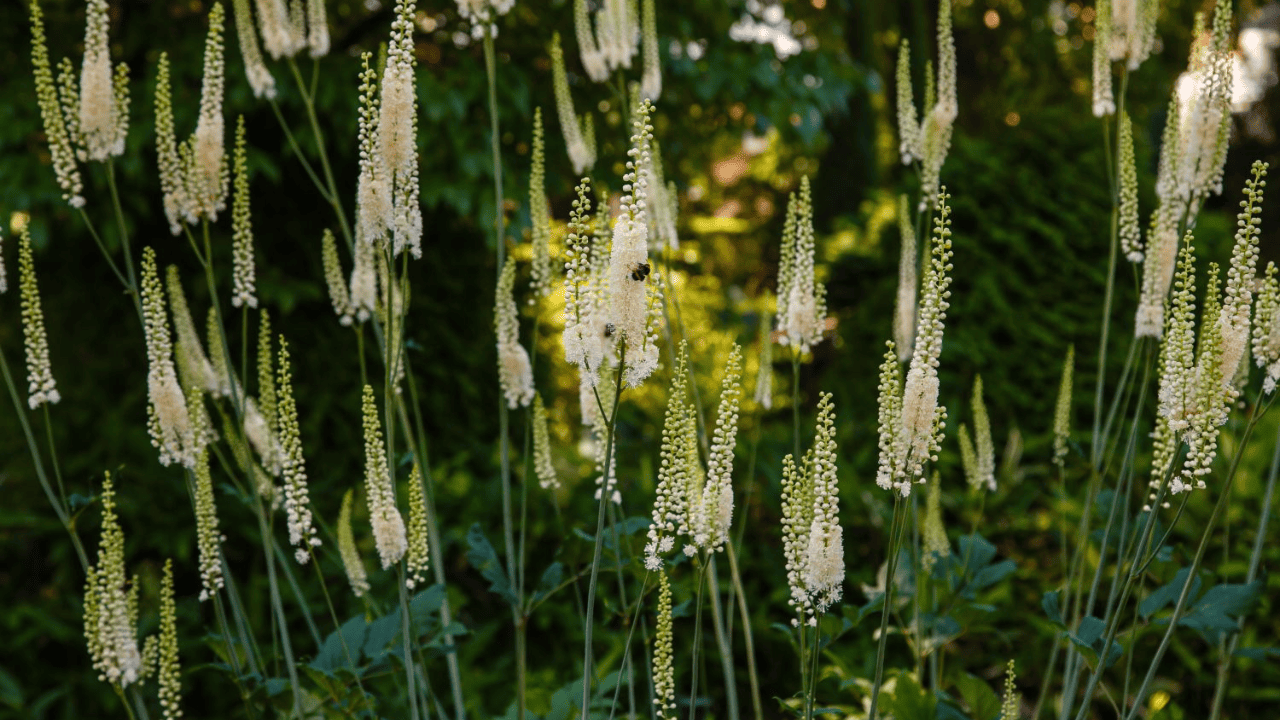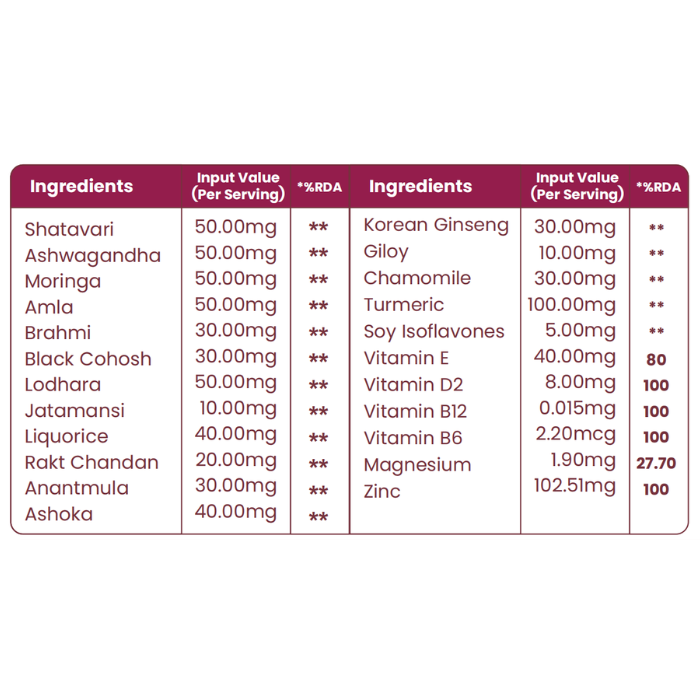Don't miss our holiday offer - up to 10% OFF!
Black Cohosh and Perimenopause: Guide to Natural Relief and Balance

Perimenopause is a threshold between reproductive youth and menopause, a period characterized by unpredictable hormonal shifts, emerging symptoms, and a need for renewed self-care. Commonly lasting several years typically beginning in the early- to mid-40s perimenopause can bring about hot flashes, mood disturbances, sleep issues, and cognitive fluctuations.
As more women seek holistic pathways to well-being and symptom relief, Black cohosh (Cimicifuga racemosa) has surfaced as a promising herbal ally rooted in both tradition and scientific inquiry.
This comprehensive guide explores how Black cohosh can help women navigate perimenopause, including its history, mechanisms of action, clinical evidence, benefits, practical use, safety, and integration into a broader wellness regime.
Understanding Perimenopause: Symptoms, Impact, and the Holistic Approach
Perimenopause is the time preceding menopause when hormone production—especially of estrogen and progesterone—becomes erratic. Hallmark features include:
- Irregular Menstrual Cycles: Periods may be shorter, longer, heavier, or lighter than usual.
- Vasomotor Symptoms: Hot flashes, night sweats, palpitations, and sudden temperature sensitivity.
- Mood Fluctuations: Anxiety, depression, irritability, and emotional lability.
- Sleep Disruption: Insomnia, difficulty falling asleep, waking at night.
- Cognitive Changes: “Brain fog,” trouble concentrating.
- Physical Complaints: Headaches, joint and muscle pain, changes in libido, vaginal dryness.
This tapestry of symptoms often prompts women to explore natural and integrative solutions. Black cohosh is among the best-researched options outside of hormone therapies for perimenopause and menopause.
Black Cohosh: The Herb at a Glance
Black cohosh is a perennial plant native to North America. Indigenous peoples and herbalists have long used its roots for reproductive and gynecological health addressing menstrual discomfort, difficulties with childbirth, and menopausal complaints. Today, Black cohosh is most commonly supplemented in the form of standardized extracts, tablets, capsules, or teas.
Traditional and Modern Uses
- Relief from hot flashes, night sweats, and related symptoms
- Supporting mood and emotional balance
- Easing muscle aches and joint pain
- Soothing menstrual cramps and irregularities
While tradition sets the stage, research in the last 50 years has expanded our understanding of how, and for whom, Black cohosh works best.
How Black Cohosh Works in Perimenopause: Mechanisms of Action
Though the exact workings of Black cohosh remain partially understood, several plausible mechanisms explain its relief of perimenopausal symptoms:
1. Selective Estrogen Receptor Modulation
Black cohosh contains phytoestrogenic compounds, notably the isoflavone formononetin and triterpene glycosides (actein and cimifugoside), which may interact with estrogen receptors in a tissue-selective fashion. While Black cohosh does not raise systemic estrogen levels, it appears to produce mild estrogen-like effects in specific tissues (such as bone) without stimulating the endometrium or posing risks seen with hormone therapies.
2. Neurotransmitter Modulation—Impact on Serotonin
Hot flashes, mood changes, and even sleep disturbances have links to central neurotransmitter activity, particularly serotonin. Black cohosh impacts the 5-HT (serotonin) system, which is thought to explain its benefits for vasomotor instability (hot flashes, sweats), mood swings, and cognitive symptoms.
3. Antioxidant and Anti-inflammatory Properties
Bioactive components in Black cohosh have antioxidant and anti-inflammatory effects, which may help buffer the physical stressors of perimenopause, including aches, pains, and cellular wear-and-tear.
4. Bone and Cardiovascular Support
Animal studies and preliminary trials suggest that Black cohosh’s estrogenic activity in bone tissue might help prevent bone loss, a looming risk during and after perimenopause. There is also evidence that Black cohosh positively affects lipid profiles, supporting heart health.
5. Pain and Neuromodulation
Black cohosh interacts with certain opioid receptors, which may explain its ability to ease muscle and joint aches—a less-discussed but real perimenopausal symptom.
Clinical Research: What Do the Studies Show?
Efficacy for Perimenopausal Symptoms
Multiple clinical trials and systematic reviews have examined Black cohosh in relieving perimenopausal and early menopausal symptoms:
- Vasomotor Symptoms (Hot Flashes, Night Sweats): Several randomized controlled trials (RCTs) and meta-analyses show Black cohosh, especially the isopropanolic extract, can significantly reduce the intensity and frequency of hot flashes and night sweats compared to placebo.
- Mood and Sleep: Black cohosh shows benefits in addressing depression, anxiety, irritability, and sleep disturbances, likely owing to its serotonergic effects.
- Physical and Sexual Symptoms: Improvements have been observed for joint aches, muscle pain, vaginal dryness, libido, and sexual function.
- Cognitive Function: Some women report anecdotal improvements in “brain fog,” though larger controlled studies are needed.
A noteworthy clinical trial found that women using 6.5mg of dried Black cohosh root extract daily experienced significant reductions in total symptom scores (including hot flashes, mood swings, and sexual complaints) after both 4 and 8 weeks, with greater effects over time. Importantly, no significant side effects were noted in this and similar studies.
Black Cohosh Compared to Hormone Replacement Therapy (HRT)
- Black cohosh does not raise circulating estrogen or stimulate the uterus as HRT can, and it may be suitable for women who cannot or prefer not to use hormones.
- Some research suggests Black cohosh’s symptom relief is comparable to certain HRT preparations for mild-to-moderate complaints, especially vasomotor and mood symptoms.
- Unlike HRT, Black cohosh has not been associated with increased risks of breast or endometrial cancer, and some compounds may even have anti-cancer properties in the lab.
Benefit Highlights: What Perimenopausal Women Can Expect
1. Hot Flash and Night Sweat Relief
Consistent data show reductions in the number, severity, and duration of hot flashes and night sweats, improving physical comfort and quality of life.
2. Mood and Emotional Stability
Women commonly report improved mood, reduced anxiety and irritability, and increased feeling of stability—even in the face of shifting hormones.
3. Sleep Enhancement
By calming vasomotor surges and balancing neurotransmitters, Black cohosh contributes to improved sleep quality: less nighttime waking, deeper rest, and reduced fatigue during the day.
4. Physical Comfort
Supplementation may help with perimenopausal aches, muscle and joint pains, and occasional headaches—addressing aspects sometimes overlooked by other treatments.
5. Sexual Health and Vaginal Wellness
Less vaginal dryness, fewer sexual complaints, and a subtle boost in libido are frequently reported by women using Black cohosh, partly attributed to its neuroendocrine and circulatory effects.
Dosing, Forms, and Practical Use
Supplement Types
- Standardized Extracts: Most studied and used in trials. Typical preparation: isopropanolic or aqueous-ethanolic extracts.
- Powdered Root Capsules/Tablets: Traditionally used form, but standardization may vary.
- Teas and Decoctions: Less consistent dosing but traditional.
Dosing Guidelines
- Clinical studies generally use 20–80mg standardized extract daily, or 6.5–160mg total daily dose, depending on the product and concentration.
- Divided dosing (twice daily) increases absorption and may steady effects.
- Start with a lower dose (20–40mg) and increase slowly to the desired range.
Timing and Duration
- Black cohosh is most effective when used daily, with consistent dosing over 8–12 weeks. Benefits often increase over time, with best results after 2–3 months.
- For ongoing symptom control, use can be continued for up to 6 months, with periodic reviews by a healthcare provider.
Choosing a Product
- Select supplements from reputable companies, ideally those providing standardized isopropanolic or aqueous-ethanolic extracts, and third-party purity testing.
- Avoid adulterated products; look for scientific names (Cimicifuga racemosa) and clear dosage information.
Safety, Side Effects, and Special Precautions
Black cohosh is generally well tolerated, but some side effects may occur, especially at higher doses:
- Mild digestive upset (nausea, stomach discomfort)
- Headache or rash
- Dizziness
- Excessive sweating or hypotension (rare)
- Weight gain or mild changes in appetite, hormone-related symptoms (occasional)
Rare but Serious:
- Isolated cases of liver toxicity have been reported, though a causal link remains unclear. Discontinue use if you notice:
- Dark urine
- Yellowing of the skin or eyes
- Severe right upper abdominal pain
- Persistent nausea, fatigue
Who Should Avoid Black Cohosh?
- Pregnant or breastfeeding women
- Those with liver disease or a history of liver problems
- Individuals on hepatotoxic medicines or with rare hormone-sensitive conditions (consult your provider)
- People with a known allergy to plants in the buttercup (Ranunculaceae) family
Medication Interactions
- Black cohosh may interact with certain chemotherapy drugs (e.g., tamoxifen).
- As an herb with mild blood-thinning action, use caution if combining with anticoagulants or antiplatelets.
Frequently Asked Questions
Can Black Cohosh Replace Hormonal Therapy?
For many with mild to moderate vasomotor and psychological symptoms, Black cohosh offers substantial relief and is a popular alternative when hormones are not appropriate. However, for severe or persistent symptoms, especially if you are at elevated risk for osteoporosis or cardiovascular disease, discuss all options with a medical professional.
How Quickly Will I See Results?
Improvements are often reported within 3–4 weeks, with optimal benefit in 8–12 weeks. Relief of sleep and mood complaints may appear faster than reductions in hot flashes or night sweats.
Is Black Cohosh Safe Long Term?
Most studies support safety for up to 6 months, and some for up to 12 months. Take periodic breaks and consult a clinician if you plan longer use or develop new symptoms.
Integrating Black Cohosh into Perimenopausal Wellness
For best results, combine Black cohosh with whole-person lifestyle strategies:
- Balanced Diet: Emphasize plant-based whole foods, healthy fats, lean proteins, and phytoestrogens (like flaxseed, lentils).
- Physical Activity: Regular movement supports mood, bone density, heart health, and sleep.
- Stress Management: Yoga, meditation, or mindfulness techniques complement adaptogenic herbs.
- Community Support: Shared experience with other women, whether in-person or online, can make the perimenopausal journey more manageable.
Conclusion
Black cohosh offers a time-honored, evidence-supported, and gentle way to address the core complaints of perimenopause. Its unique combination of estrogen-modulating, neuroendocrine-balancing, antioxidant, and anti-inflammatory actions make it especially suited for the shifting landscape of midlife.
While not a panacea—and not recommended for everyone—it stands out as a viable herbal ally for those seeking to move through perimenopause with more comfort, stability, and grace. As with all natural therapies, ensure your approach is individualized, integrated, and medically supervised when necessary.
Always consult your healthcare provider before starting or stopping any supplement, especially if you have underlying conditions, are on medication, or have complex symptoms.











